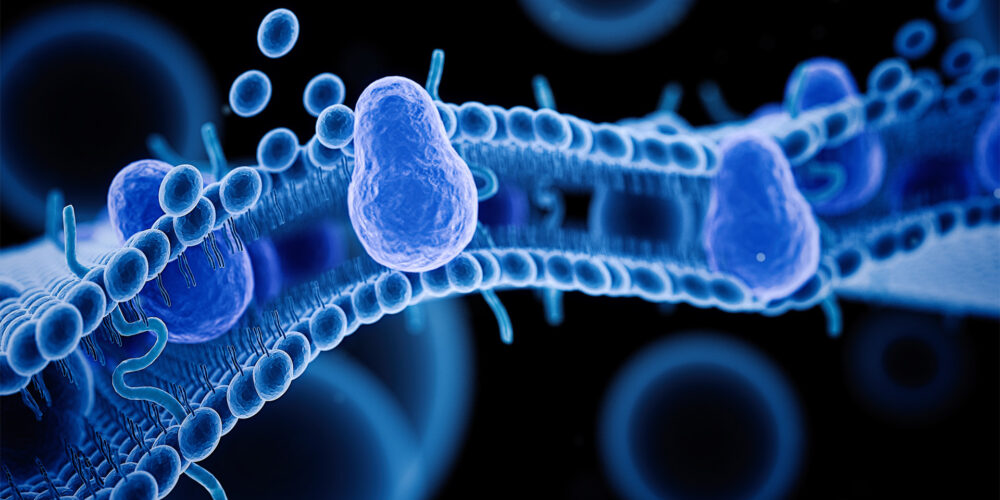Understand the suitability of your compound for oral dosing by using our Caco-2 permeability assay to predict human intestinal permeability and to investigate drug efflux.
Caco-2 permeability is included in our portfolio of in vitro ADME drug transporter screening services. Cyprotex delivers consistent, high quality data with cost-efficiency that comes from a highly automated approach. We offer Caco-2 permeability screening services as well as full regulatory DDI and drug transporter packages according to FDA guidance and EMA guidance.
Introduction
Caco-2 permeability assay to investigate intestinal permeability:
- Cyprotex's Caco-2 permeability assay uses an established method that measures the rate of flux of a compound across polarized Caco-2 cell monolayers and from which the data generated can be used to predict in vivo absorption of drugs.
- The Caco-2 cell line is derived from a human colon carcinoma. The cells have characteristics that resemble intestinal epithelial cells such as the formation of a polarised monolayer, well-defined brush border on the apical surface and intercellular junctions.
- Assessing transport in both directions (apical to basolateral (A-B) and basolateral to apical (B-A)) across the cell monolayer enables an efflux ratio to be determined which provides an indicator as to whether a compound undergoes active efflux.
- The P-glycoprotein (P-gp) inhibitor, verapamil, can be included to identify whether active efflux is mediated by P-gp (alternatively for definitive P-gp substrate identification, we have a P-gp substrate identification assay using the MDCK-MDR1 cell test system in which human P-gp is expressed in isolation and unlike Caco-2, is not subject to potential efflux interference by breast cancer resistance protein (BCRP)).
- The BCRP inhibitor, fumitremorgin C, can be included to identify whether active efflux is mediated by BCRP (see Cyprotex's BCRP substrate identification assay).
- A cocktail of the inhibitors elacridar and MK-571 can also be used for a passive permeability assessment, where active efflux mediated by P-gp, BCRP and MRP2 (Multidrug Resistance Protein 2) is inhibited.
Protocol
The Cyprotex Caco-2 permeability assay can be run in a range of study formats to suit your needs, our default assay conditions are as below. If you require more information, or are interested in a bespoke study setup, please contact our team.
Data
Data from Cyprotex's Caco-2 Permeability Assay
Q&A
Please provide an overview of Cyprotex's Caco-2 Permeability assay.
Caco-2 cells are widely used as an in vitro model for predicting human drug absorption. The Caco-2 cell line is derived from a human colorectal carcinoma, and when cultured, the cells spontaneously differentiate into monolayers of polarized enterocytes.
The cells are cells are grown on a semipermeable membrane in a Transwell™ system plate and form a confluent polarized monolayer over 18 - 22 days. On day 18 - 22, the test compound is added to the apical side of the cell monolayer and the flux of the compound across the monolayer, into the basolateral receiver compartment, is monitored following a 2-hour incubation period. To study drug efflux, it is also necessary to investigate transport of the compound from the basolateral compartment to the apical compartment.
The permeability coefficient (Papp) is calculated from the following equation:
Where Papp
is the apparent permeability coefficient (cm/s x10-6), dQ/dt is the rate of permeation of the drug across the cells (pmol/sec), C0 is the donor concentration at time zero (pmol/mL) and A is the area of the cell monolayer (cm2).
How do I interpret the data from the Caco-2 permeability assay?
There are several ways in which data from the Caco-2 permeability assay can be used. Firstly, the compounds can be ranked by their Papp values. Two reference compounds, atenolol (passive paracellular transport) and antipyrine (passive transcellular transport) are screened alongside the test compounds. Atenolol and antipyrine have known human absorption of 50% and 97% respectively2,3, and can be used as markers for ranking test compounds. Secondly, data can be used in conjunction with other in vitro parameters to predict the oral pharmacokinetics of a compound in vivo using PBPK (Physiologically based pharmacokinetic modelling) prediction.
Find out more about how to predict PK using ADME data.
What are the differences between the PAMPA and the Caco-2 permeability assay?
The Caco-2 permeability screen is considered to be more representative of human absorption in vivo than PAMPA (parallel artificial membrane permeability assay). PAMPA solely provides a measure of passive diffusion whereas the Caco-2 model provides better prediction of the human absorption for compounds which display active uptake or efflux or pass through the membrane via the paracellular route. The information from both assays used in conjunction can be valuable in identifying the root cause for poor absorption.
How do I measure drug efflux?
A bidirectional Caco-2 permeability assay is performed where the transport of the compound is measured in the apical to basolateral direction as well as the basolateral to apical direction. The result is typically reported as an efflux ratio i.e. Papp(B-A)/Papp(A-B). If the efflux ratio is greater than two then this indicates drug efflux is occurring. Talinolol, a known P-gp substrate, and estrone 3-sulfate, BCRP substrate, are screened as controls compound to confirm that the cells are expressing functional efflux transporter proteins.
How do you know if the cell monolayer integrity has been maintained throughout the study?
Lucifer yellow, a paracellular membrane integrity marker, is co-incubated with the test compound at the start of the experiment. At the end of the study, the extent of the lucifer yellow permeation is measured against a predetermined acceptance threshold.
How and why is the % recovery calculated?
The % recovery can be useful in interpreting the Caco-2 data. If the recovery is very low, this may indicate problems with poor solubility, non-specific binding of the compound to the assay plates, metabolism by the Caco-2 cells or accumulation of the compound in the cell monolayer.
How will low recovery impact the data interpretation?
Low recovery can lead to ambiguity in the interpretation of Papp values, and subsequently a compound’s efflux status. For example, a compound with a propensity to adsorb onto the plastic of the transwell plates could have a lower than expected free concentration in solution. This in turn would mean that less compound is available for uptake transporters or to passively diffuse across the membranes of the cell monolayer, and lead to a lower Papp 5. Less compound able to enter the cell also means there is subsequently a reduced intracellular concentration available to be effluxed by transporters such as P-gp and BCRP.
This can result in a compound not being classified as an efflux substrate if there is not a sufficient amount of compound within the cell to allow the efflux transporter to generate an efflux ratio >2.
How can I improve the recovery of my compound?
One way to reduce the aforementioned issues is to include Bovine Serum Albumin (BSA) in the assay buffer. BSA aids in reducing compound non-specific binding issues by blocking potential binding sites in the assay plasticware and improves aqueous solubility of lipophilic compounds5. This often enables the compounds assay incubation concentration to much more closely reach what is desired, as the compound is less likely to bind to the plasticware and struggle to remain in aqueous solution during the course of the incubation. These benefits allow for greater recovery values to be achieved, and overall, for more predictive permeability results and efflux or transporter-specific substrate status results to be established.
Indeed, it is predicted that the number of New Chemical Entities (NCEs) currently in pipelines that fall within the category of Biopharmaceutics Classification System (BCS) class II, exhibiting low solubility and high permeability, are expected to increase markedly in the coming years6. It is therefore important to consider suitable approaches to improve the poor aqueous solubility of these compounds, such as the addition of BSA to the assay buffer, during permeability screening to provide robust data to use and NCE permeability ranking and PBPK prediction .
References
1) Wang Z et al. (2000) Determination of in vitro permeability of drug candidates through a caco-2 cell monolayer by liquid chromatography/tandem mass spectrometry. J Mass Spectrom. 35(1); 71-6
2) Zhao YH et al. (2001) Evaluation of human intestinal absorption data and subsequent derivation of a quantitative structure-activity relationship (QSAR) with the Abraham descriptors. J Pharmaceut Sci 90; 749-784
3) Yazdanian M et al. (1998) Correlating partitioning and caco-2 cell permeability of structurally diverse small molecular weight compounds. Pharmaceut Res 15; 1490-1494
4) Kansy M et al. (2001) Pharmacokinetic optimisation in drug research Ed. Testa et al; 447-464
5) Cai X et al. (2019) Addition of Optimized Bovine Serum Albumin Level in a High-Throughput Caco-2 Assay Enabled Accurate Permeability Assessment for Lipophilic Compounds. SLAS Discovery
24(7) 738-744
6) Bhalani DV et al. (2022) Bioavailability Enhancement Techniques for Poorly Aqueous Soluble Drugs and Therapeutics. Biomedicines
10, 2055
7) FDA Guidance for Industry – In Vitro Drug Interaction Studies - Cytochrome P450 Enzyme- and Transporter-Mediated Drug Interactions (January 2020)
8) The International Transporter Consortium (2010) Membrane transporters in drug development. Nat Rev Drug Disc 9; 215-236
9) Wright A J et al. (2011) Breast cancer resistance protein BCRP (ABCG2)-mediated transepithelial nitrofurantoin secretion and its regulation in human intestinal epithelial (Caco-2) layers. European Journal of Pharmacology 672, 70-76
Downloads
- Cyprotex ADME Guide 5th Edition >
- Cyprotex DDI Regulatory Guide 3rd Edition >
- Cyprotex Caco-2 Permeability Factsheet >

